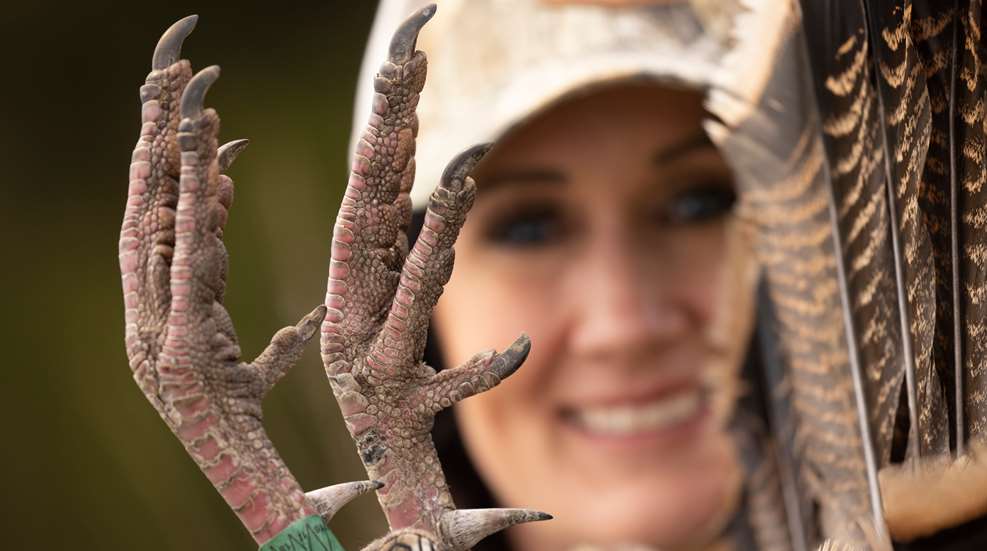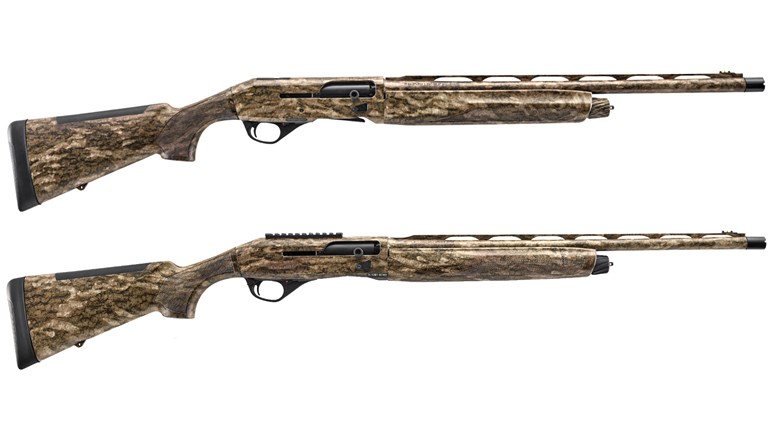
I absolutely love getting out for the first turkey hunt of the season, but it always seems I forget a few very important things on the first time out. Here is a guide to help you check the boxes for everything you need for a fun first and successful hunt of the season.
 1. License/Tag. Double check the dates, county, method of take, etc to ensure you’re completely legal before heading out. I like to place my license in a plastic bag and always keep it in the same tucked away location inside my turkey vest. You don’t want to put it in a pocket you frequently use, as it’s easy for this to slip out while taking other items in and out.
1. License/Tag. Double check the dates, county, method of take, etc to ensure you’re completely legal before heading out. I like to place my license in a plastic bag and always keep it in the same tucked away location inside my turkey vest. You don’t want to put it in a pocket you frequently use, as it’s easy for this to slip out while taking other items in and out.
2. Turkey Shotgun. When it comes to choosing a shotgun, you must first decide on caliber. I’ve shot turkeys with a 12-gauge, 20-gauge and .410 bore (always ensure that it’s legal in your area to use a .410 before taking one to the field). The main difference is recoil, and some of this can be modified with your ammo choice, however the tiny pop of a .410 is much less than that of a 12 gauge. The 20 gauge falls right in the middle. Most of our kids used a 20 gauge as they grew up, but Jax started hunting earlier and began with a .410, which literally has the slightest recoil and sound imaginable from a shotgun. Just to prove how effective it can be, I also shot a turkey last year using the .410. My go-to turkey shotgun in 12 gauge is a Winchester SXP Waterfowl Hunter with an E-Otech holographic sight on top.
3. Turkey Ammo. There are many options when it comes to deciding on turkey ammunition, but my favorite is the Winchester Longbeard XR. I use this is both 12-gauge and 20-gauge, for the .410 I use Double X Diamond Grade 3inch 7 ½ shot. The LongBeard XR is a dedicated shotshell made specifically for the needs of a turkey hunter and uses a resign to keep the shot pattern together longer, giving you improved performance down range. Once you decide on caliber, you need to pick out what size shot. You can use 4s, 5s or 6s, which is ultimately deciding on the size of the BB. 4s are the biggest so there are fewer BBs, and 6s are the smallest, having the most BBs. You also will need to decide upon the shell length. For 12-gauge you can choose a 3½-inch shell or a 3-inch shell. The 3½-inch shell offers more powder, pellets and range, but also more recoil. The true determining factor is figuring out what can you shoot most effectively, and how long your shots will be.

4. Shooting Sticks. Ensuring you have a super steady rest is key, plus it eliminates movement as the turkey is approaching, lessening your chances of getting busted. I like using a Bog Death Grip because it holds my gun at the ready at the perfect height and location, plus features a tripod shooting rest so you’re rock solid. If I need to make slight changes as the bird comes in, that is easy—but once again, it’s all about being steady and able to adapt on the fly.
5. Turkey Vest. Organization is key, especially when you’re run ‘n gun hunting. Knowing where all your gear is without having to search is important because it again cuts down on movement and improves efficiency. Sometimes you have to get setup extremely fast as a bird approaches and being organized will help you do this quicker.
6. Turkey Calls. I’m a firm believer in having a wide variety of calls in your arsenal, as each hunt/location calls for different setups. A box call is always a must for me, as we hunt South Dakota, where the wind is often a factor. You need a call that can cut through the wind and get loud if necessary. I also like to keep a slate call or two along with mouth calls readily available. The mouth calls are a great way to call without adding any extra movement and can also be used to make your bird perk its head up for the shot without any movement while still on your gun.
7. Camo Clothing. Turkeys have incredible eyesight, so staying hidden is a must. This also means limiting your movement when a bird is coming in, as they see everything. My favorite turkey hunting gear is the DSG Bexley Pant because it’s super lightweight and comfortable. I then wear a longsleeve lightweight shirt and keep a hoodie in my pack for those cool mornings. For the hoodie I like the DSG Breanna 2.0 Fleece Pullover.
8. Insect/Tick Spray. I don’t like bugs, and especially hate ticks. Before the season begins I always spray all my turkey clothes down with Permethrin, which is the very best product I’ve seen to keep ticks away, plus it lasts up to 40 days or five washes. I also bring a Picaridin spray along to keep the mosquitoes away during the hunt. Both of these are made my Ranger Ready and are a much safer and effective alternative to DEET. In the past I’ve used DEET and it has literally eaten the paint off my camera from the residue on my hands. This is a much better option and works incredible. For more on this, visit my NRA Women article on the topic.

9. Face netting/Gloves. When trying to stay hidden from turkeys, we all remember to camo up, but many times people forget about their face and hands. These are probably the two things that will have the most movement as a turkey draws near so don’t forget to cover these two areas! I like a thin facemask that can be pulled up as a turkey gets close. As far as gloves, any thin glove works great and really does a number on keeping you concealed as your hands and fingers will move some as you get ready to shoot so why not camo them up to? If you don’t like having a facemask on, try facepaint instead!
10. Decoys. When it comes to turkey decoys, the more realistic the better. Again, these birds have incredible eyesight, so I’ve had the best luck over the years with Dave Smith Decoys. This is my go to for both turkey and deer hunting and the realism is second to none. Of course having the entire flock is great, but my two favorites is a jake and submissive hen combo. I’ve had excellent luck getting big tom’s to either fight my jake or jump on the back of my submissive hen so plan your shot accordingly.

11. Snacks/Water. I can’t count the number of times we have taken off in the morning thinking it will be an hour or so sit, and end up circling back sometime after lunch or even into the afternoon. That’s why I always pack snacks and water, because you just never know how long the day will go. If I’m hungry or thirsty it’s hard to concentrate, so anyone who has ever hunted with me knows these are a couple things that are always in my pack!

12. Boots. Choosing the right footwear can be trick but so often early spring turkey hunting is wet and muddy so my go to is always a rubber boot to start off the season. As the season heats up and the land dries I usually switch to a very light leather booth that’s easy to walk in and uninsulated to ensure my feet do not overheat.
13. ThermaCare Wraps. These wraps have become a staple in any hunting bag as there are times the temps drop more than expected. Being cold is never fun. They are in a package and stay at the ready in the bottom of any pack or turkey vest. If the temps get cold simply open them up, place it on your lower back over your kidneys and you’ll be amazed how warm it keeps you all day. They last about 16 hours, so you’ll be set for the rest of the day and will never burn your skin. They’re made for back pain but are scent and drug free so work perfect for hunting situations and can be picked up at most local pharmacies.
14. Camera. Don’t forget to take the time to get photos of your bird in the field. These can be done on your phone or a designated camera. This is a great way to commemorate a hunt and always remember the fun and hard work that went into it. For ways to take the best turkey pics, check out my related blog.

Related Videos:















































